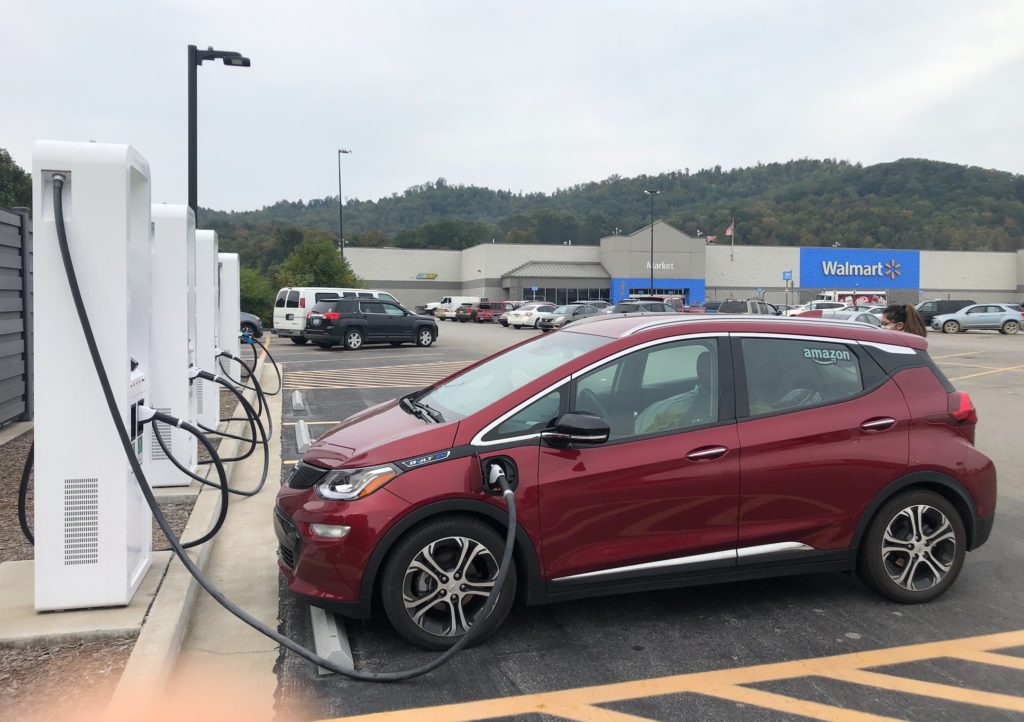I recently watched the excellent YouTube video “The Electric Charging Problem” by Wendover Productions (~3M subscribers, Sam Denby).
In this video, he argues that the limiting factor for the adoption of EVs in the US is NOT car price, but the available range. And, he expands this to analyzing that more charging stations would pretty much take care of the range problem.
For those unaware, there are 2 distinct patterns of EV charging.
Slow charging: 12 miles of range per hour of charging, or less
The ideal setup for slow charging is to charge overnight at your home. Then, every day you start with a full battery. Then, for most local travel, you NEVER have to worry about charging. This works great for most owners’ day-to-day activities. The chargers can be relatively inexpensive and possibly just an extension cord to a standard AC outlet.
Fast, on the road, charging: 300 to 800 miles of range per hour of charging
When traveling, where you are likely to want to travel more than the full battery range of your EV, you will need to use a fast charger. We are used to gas cars. When filling up a gas tank, in 10 minutes you can get 400 miles of range.

State of the EV Battery
At this point, EV batteries cannot accept energy at a rate anywhere near the rate you get when filling up with gas. Under ideal circumstances, including the right car and the right charging station, you could theoretically charge at a rate of 1000 miles of range per hour (I’m going to abbreviate this MPH). This is a Tesla Model 3 charging at a Telsa version 3 supercharging station at 250kW. The battery will need to be 1) preheated and 2) depleted (charging slows as the battery passes 50%).
An interesting side note is that in real-life EV driving today, you would stay away from completely depleting your battery, even more than you would with an ICE (Internal Combustion Engine, gasoline) car. Gas stations are all over the place. Charging stations are not.
Real-Life Fast Charging with Tesla
Car and Driver reported a real-life test comparing Tesla charging at a 250kW version 3 supercharger and a 150kW charger. When charging from near empty to full, the 250kW charging station only decreased the charging time by 2 minutes from 1 hour 8 minutes to 1 hour 6 minutes.
This was charging a 2019 Tesla Model 3 Long Range with an EPA range of 353. Doing the calculations, the NET charging rates were 311 MPH (250kW) and 302 MPH (150kW). Essentially the same and only a third of the theoretical maximum.
Because the chargers slow down so much as the battery fills, if you were trying to minimize your charging time, normally you would not charge to full. Here are the charging rates from this report for charging to 50% and 75%.
Battery to 50% (177miles): 758 MPH (14 minutes, 250kW) and 624 MPH (17 minutes, 150kW)
Battery to 75% (265 miles): 567 MPH (28 minutes, 250kW) and 530 MPH (30 minutes, 150kW)
What to Expect with Tesla Supercharging
To use nice round numbers and approximate what I’d expect in the real world, here are the big points for charging a Tesla on the road.
- Expect to spend 30 minutes charging at each stop.
- You will get about 250 miles of driving range.
- Your charging rate can go up dramatically if you only fill to 50%.
- Using a V3 250kW charging station will only save you a few minutes.
Expect to spend 30 minutes charging at each stop and get about 250 miles of range.

We need more charging stations
This leads us to the point and the point of the YouTube video I mentioned upfront. We need more charging stations. Charging time efficiency (MPH) will go up dramatically with fewer shorter stops. Driving an EV on longer trips will work out a whole lot better when there are more charging stations.
In addition to increasing the charging efficiency, more stations will also greatly reduce range anxiety. Being an EV owner myself (2017 Chevy Bolt), I really look forward to the day when there are enough charging stations that I can stop needed to spend lots of time doing route planning for any trip longer than my available range.
We need Universal or Interchangeable charging standards
This leads me to my point of posting. Having competing charging standards is currently THE BIGGEST deterrent from the adoption of electric vehicles. People want to know that they can easily travel from point A to point B even if it is a longer drive.
In the US, Tesla has the best most reliable network. CCS stations are almost as numerous and coming on strong, but lack a lot of the reliability of the Tesla charging stations.
Tesla has started offering adapters that will allow Tesla cars to charge at CCS stations. (In Europe, they are actually selling Tesla’s with CCS plugs. I’m still trying to get my head wrapped around this one.) Will there ever be adapters to allow CCS cars to charge at Tesla stations?
If Tesla’s mission is to “accelerate the world’s transition to sustainable energy” then why wouldn’t they move forward with allowing CCS cars to charge at their Tesla chargers. I think that eventually, they will. They have already stated that they are open to allow other car manufactures to use their charging network, they just want them to contribute to the cost to create that network.
For now, I think they see the huge commercial advantage that they have created with their network. And I applaud them for it. Since they know that many more charging stations are needed, they don’t want to have their existing network over-utilized with non-Tesla cars. The availability of good and AVAILABLE charging is a major selling point for Tesla.
This is just how the capitalist system in the US works. Seems like in general, it works very well, but at this point not have a universal standard is slowing the adoption of EVs. Well, this will change over time. It seems that battery production (and battery cost) is already a limiting factor.
As the battery supply improves and the charging networks (both Tesla and CCS) get built out, we will see increased adoption in EVs. Perhaps at some point, the charging networks will come together, but I think it will take a few years.
I look forward to an electric future. We will get there.
